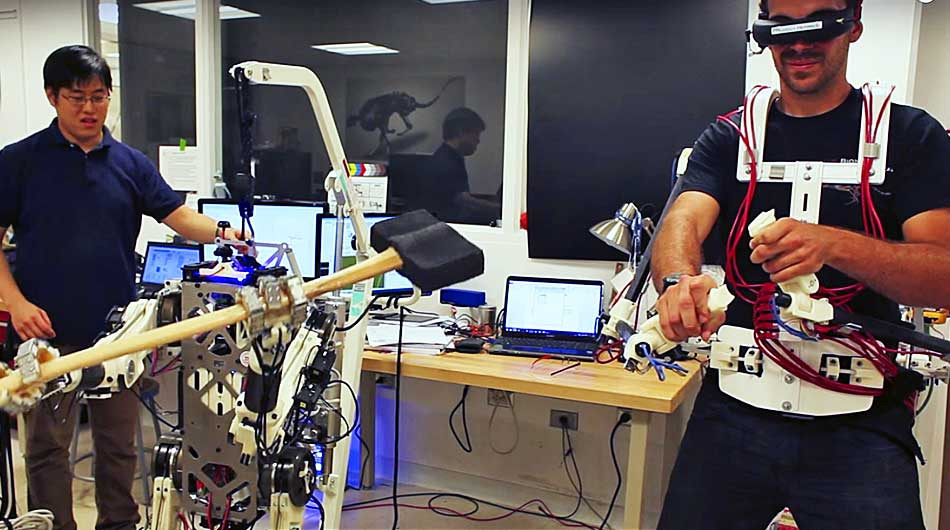Massachusetts Institute Of Technology Disaster Robot Perfectly Mimics Human
HERMES is a humanoid robot who is controlled by a human in a mechanical exoskeleton, in order to take advantage of a human’s split-second reflexes that control functions like balance.
The creation of robots to replicate human activities is a relatively tough task – as shown in the recent DARPA robotics challenge – but a group of researchers at MIT have integrated a closer human contribution to a robot they are creating. Devoid of any human input, the force of punching into a drywall will send the robot headlong into the wall, because it lacks any sense of balance.
The robot can act like a kind of puppet that can act with precision. The human controller will wear an exoskeleton, which provides him or her with feedback on what the robot is doing and feeling. Human-like robots with similar dexterity would be prime candidates for entering tackling environments that would be too risky for human first responders (after all, what better than a humanoid robot to explore environments that were designed for and by humans). The developers say that a scenario could be envisioned wherein a human operator could remotely deploy HERMES to disaster sites, and safely manage the situation. They eventually want to develop a full body suit and goggles so that the operator can feel and see everything that the robot does and vice versa. This reflexive action is conveyed to the robot, which prevents itself from falling, as a result.
Depending on the forces measured, the researchers calculated the robot’s center of pressure, or where it was shifting its weight. “Our next goal is to try more complex coordinated movements such as swinging an axe or opening a spring-loaded door”.
A balance-feedback mechanism is what keeps Hermes from toppling. But perhaps more important than just a way to control a robot in the absence of knowing how to do it autonomously is being able to observe and collect data from the robot. The research was partially funded by the Defense Advanced Research Projects Agency (DARPA).








